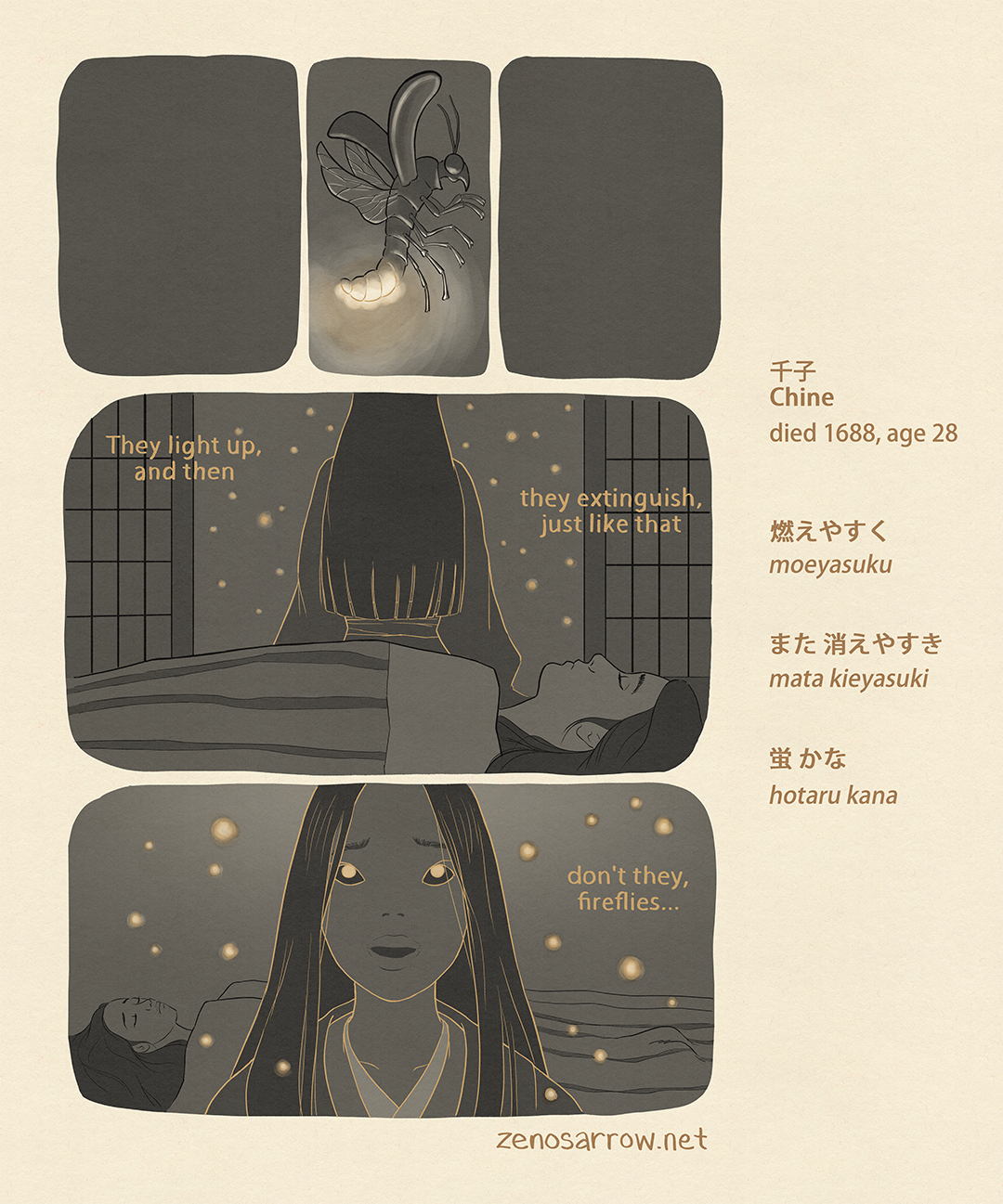Chine's Fleeting Fireflies
An early modern Japanese death poem by Chine, translated and illustrated as a poetry comic
Hey everyone,
A quick note that Mam’s Books in Seattle’s Chinatown/International District has picked up a couple copies of Blood of My Blood to sell, too!
Have a look if you’re in the area. Ok, on to the show.
Till next time-
William
This is the third in a series I’m doing of haiku comics around the death poems (jisei), farewell notes to life, of early modern Japanese poets. Learn more about this project, Japanese cultural context, and haiku, and find links to the other comics in this series here: death haiku comics.
This ad-free and plain ol’ free publication runs on the positive vibes coming from readers like you. Subscribe to send me more positive vibes.
千子の辞世 Chine’s Death Poem
千子 Chine (died 1688, age 28)
燃えやすく
moeyasuku
また 消えやすき
mata kieyasuki
蛍 かな
hotaru kana
Translation:
They light up, and then
they extinguish, just like that
don’t they, fireflies…
Notes
On fireflies:
Fireflies mainly come out in the summer in Japan, so in haiku they generally indicate the summer season, but sometimes they spill over into the fall.1 Chine died in early summer.2
In her poem, Chine is clearly comparing fireflies’ flickering lights, coming into and then going out of existence so lightly, so lacking in occasion, to that of our own lives. Easy come easy go.
Although Hoffmann doesn’t mention other Japanese cultural symbolism for fireflies, I wonder if there isn’t more. The tragic 1988 Japanese animated film Grave of the Fireflies also uses fireflies to symbolize fleeting lives, in this case that of the two children, Seita and Setsuko, during World War II who are the focus of the movie.
Yoel Hoffmann. Japanese Death Poems. (Tokyo: Tuttle Publishing, 2018), 166-167.
Ibid., 88, 146.





